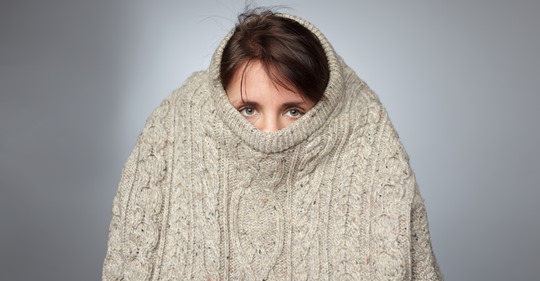
The Truth About Winter Depression
When winter approaches, the days get shorter and the nights colder, darker, and longer. You may notice a tendency to recede into yourself, everything you do and every thought you have may be tinged with melancholy. The dreaded winter blues, as they’re often referred to – but is there any truth to this supposed malaise?
Hafsa Rafique, a Karachi-based clinical psychologist, commented, “Yes, winter blues do exist. We all experience them at some point or another when the nights grow longer and the days get shorter.”
Naturally, it’s worse for countries where the lack of sunlight is intermingled with the cold – the colder and darker it gets, the worse your ‘winter blues’ get until it increases in intensity to a point where it sometimes transforms into Seasonal Affective Disorder. Winter blues are obviously low in intensity; if it gets to a point where it interferes with your social and occupational functioning, then it can likely be classified as S.A.D.”
What is Seasonal Affective Disorder?
Seasonal Affective Disorder, is essentially used to classify depressive episodes that follow a seasonal pattern. The symptoms associated with S.A.D. rise to prominence in the late fall and winter season, going on to gradually improve come springtime. Symptoms such as depressive mood, anxiety, mood swings, loss of appetite, insomnia, etc. can significantly incapacitate an individual.
There is considerable evidence to suggest that exposure to light plays a big role in the onset of mental and physiological symptoms. With fewer daylight hours, colder temperatures, and weak light, S.A.D. can take hold of anyone in the winter months.
“Sunlight plays a critical role in the decreased serotonin activity, increased melatonin production, disrupted circadian rhythms, and low levels of Vitamin D associated with symptoms of SAD,” states a 2015 research conducted by clinical health professional Sherri Melrose.
For one thing, this makes it clear that the winter blues don’t just manifest as an abstract emotional or mental state, but that S.A.D. has a physiological cause as well. Natural light has an impact on the circadian rhythms our sleep cycles operate on, affecting the production of melatonin – a natural hormone that is responsible for regulating sleep and wakefulness. Less daylight means more melatonin, which results in lethargy and drowsiness.
Treatment Options
Medication
The main symptom that needs to be addressed in treatment of Seasonal Affective Disorder is understandably the depression. For this purpose, many individuals afflicted by the problem are prescribed antidepressants to combat the issue of serotonin imbalance in the brain.
Counselling
Getting the help of a professional equipped to offer adequate support and guidance is also a favored treatment for S.A.D. The depression can be managed with cognitive behavioral therapy (CBT) and a therapist may even recommend some much-needed changes to make in your daily routine in order to better handle the impact Seasonal Affective Disorder can have on your quality of life.
Lifestyle Changes
Whether it’s a mild case of the winter blues or full blown Seasonal Affective Disorder, a few adjustments in the daily routine can go a long way in alleviating the symptoms. There’s a certain atmosphere that winter brings into town – one that makes it all too easy to curl up into bed and spend a quiet night in. Waking up in the mornings seems to get gradually more and more difficult as the dawn of each day gets all the more chilly.
A lack of activity can mean a lower level of daily exercise, which is hardly ever a good thing for both the body and the mind. People with S.A.D. are advised to get out there and get some exercise, and soak up as much sun as possible.
Cuddling into your couch with a warm cup of coffee is great as an introspective night once in a while, but habitually doing so in the cooler months means becoming inadvertently isolating yourself. A little social stimulation can go a long way in lifting spirits up, so it’s no wonder why the quiet nights in on long wintry nights can have you feeling a little blue. Making plans with loved ones and getting emotional support from those around you can go a long way in helping you battle your wintry demons.
Light Therapy
Considering the sensitivity of S.A.D. sufferers to light, treatment in the form of light therapy is also used with a good degree of success. The individual in question is made to sit near a source of full-spectrum light, starting off with smaller 15 minute sessions to much longer ones that can last up to 45 minutes.
If you find yourself consumed by unexplainable melancholy during winters – one that hinders your daily functioning considerably – then maybe it’s time to consider the fact that you may have Seasonal Affective Disorder.
It’s essential to understand the fact that S.A.D. is indeed an actual disorder, and not just a cleverly coined term used for harmless gloom around wintertime. With the right information and a treatment that works for you, you too can make it through the lows of the winter blues!

